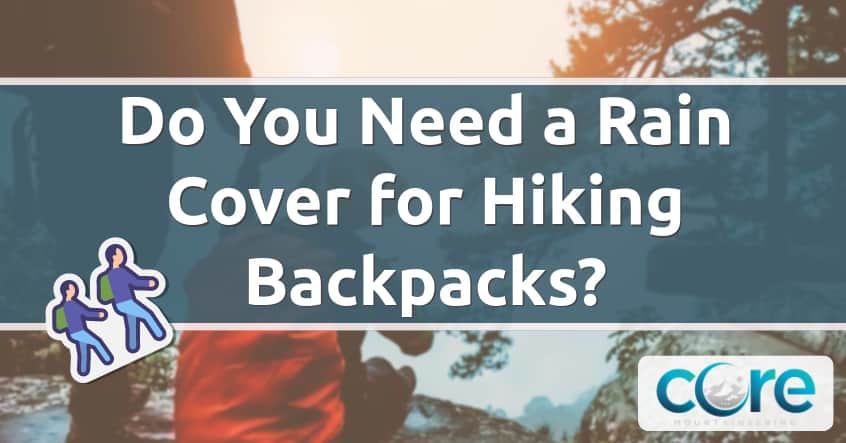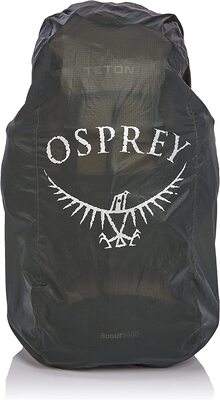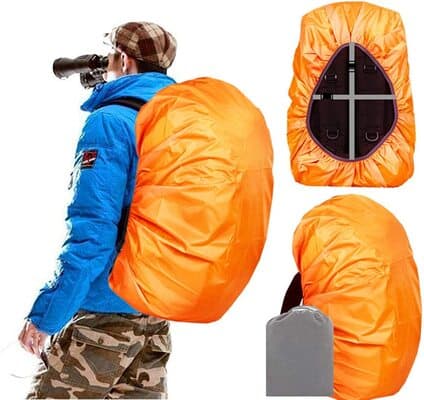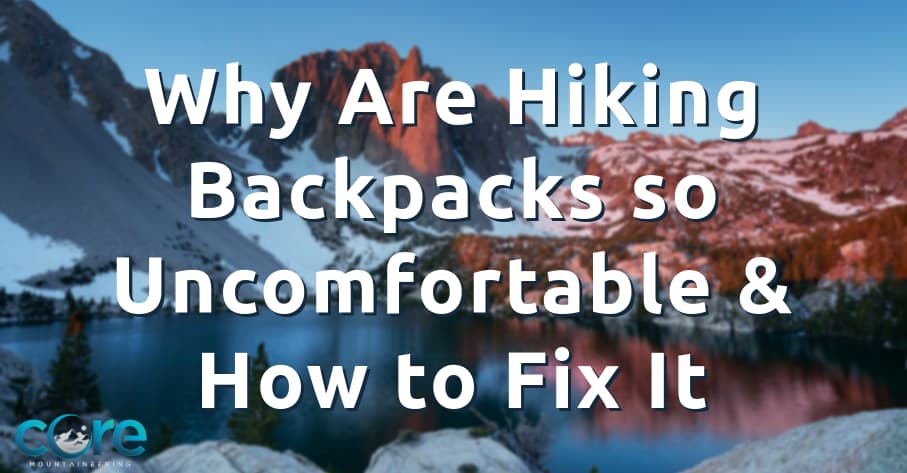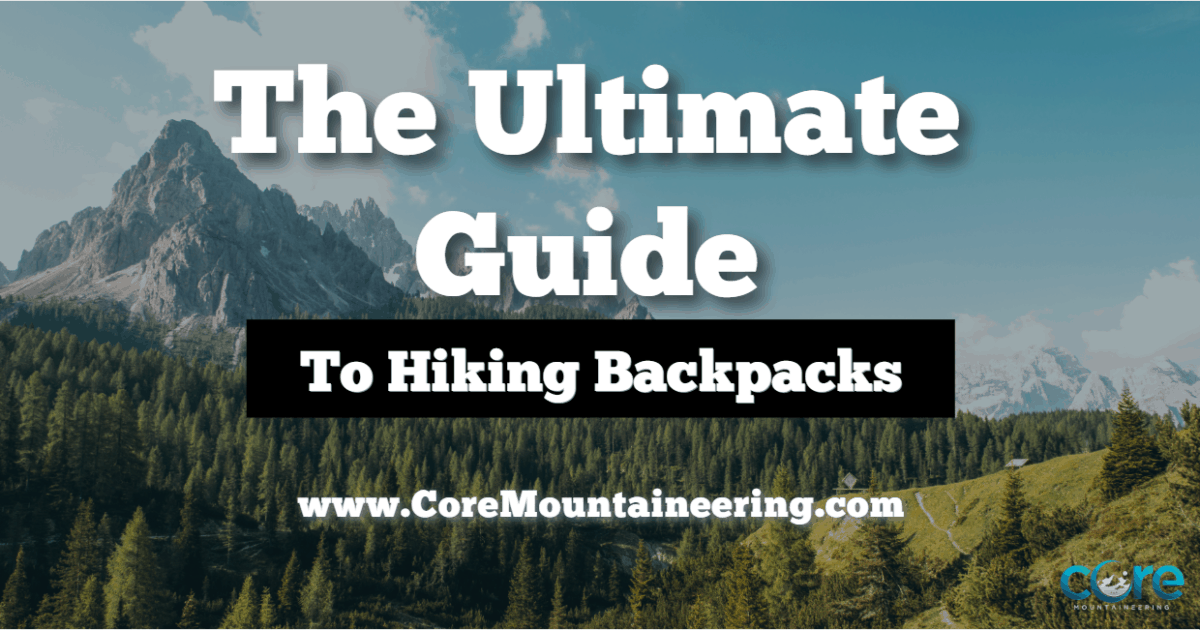We love hiking, but unpredictable weather conditions can ruin your experience. To keep your belongings and gear dry, you may need to invest in a rain cover for your backpack.
In this article, we will discuss the advantages and disadvantages of using a rain cover for hiking backpacks, recommendations, and other ways to keep your backpack dry.
How Do I Protect My Backpack from Rain?
A rain cover is a simple and effective way to protect your backpack from rain. Rain covers are usually made of waterproof material, such as nylon, and are designed to fit snugly over your backpack. When purchasing a rain cover, it is important to make sure that it is the right size for your backpack.
Most quality backpacks come with a rain cover built in. You may not even realize it’s there, check the bottom pockets and be sure. But if your backpack doesn’t include a rain cover don’t worry, we got you…covered.
Below are some of our favorite rain covers you can add on to your backpack setup.
Rain Cover Recommendations
Osprey Ultralight Raincover
Coming in three different sizes to accommodate your backpack, the Osprey Ultralight rain cover can be easily secured with a cinch attachment and conveniently folded into its own case to create more space when not needed. Constructed from 40D Ripstop Nylon, it is designed to be long-lasting.
Pro: Sets the standard for quality rain covers. The cinch helps secure the pack with ease. Super lightweight but durable.
Con: Some color options might be nice.
You can check for the availability of the Osprey Ultralight raincover here.
Joy Walker Waterproof Backpack Rain Cover
This backpack rain cover boasts an upgraded buckle strap to prevent sliding and fits backpacks ranging from 15-25L with dimensions of Length(9.8-12.9″), Width(5.9-7.8″), and Height (13.7-17.7″).
Its durable 900D mixed material provides high-level waterproof protection.
Its triple construction includes rip-resistant external fabric and double waterproof coated internal layers, safeguarding against scratches, dirt, water, rain, fog, and snow. Additionally, the rain cover comes with a pouch for easy and compact storage.
Pro: A lower-cost option that is suitable for most environments. Comes in multiple colors!
Con: Sizes seem to vary a bit. The buckle on the closing strap can hit you in the back sometimes, depending on placement.
You can see the current price here.
Sea to Summit Ultra-SIL Nano Tarp Poncho
This poncho is versatile, functioning as a raincoat, pack cover, groundsheet, or tarp shelter. It is crafted from waterproof 15D Ultra-Sil Nano fabric with durable double-stitched seams and tape sealing.
Its features include side snaps for rain protection, a three-panel peaked hood, and a drawcord tail hem. It accommodates a large backpack and easily converts into a shelter with guy attachment points.
Despite its ample size of 57 x 104 inches, it can be compressed down to 3 x 5.25 inches in its included stuff sack, and it weighs a mere 8.1 ounces.
Pro: A little bit of a different option. The multi-function use comes in handy at times. Perfect for the rainy season or temperate rainforests.
Con: Can catch the wind if not tightened down. If wet, it might be harder to pack down and put away than other options on the list. A bit heavier than just a regular rain cover.
Note: If you want just the backpack cover, Sea to Summit makes that too.
You can find this Poncho here.
LAMA 2 Pack Waterproof Rain Cover
The LAMA rain cover is a reliable entry level solution to prevent water damage. It features a strap around the bag’s middle for tightening around the pack, along with a bright material and reflective strip.
The dual-layer design employs durable wear-resistant Nylon on the exterior and waterproof coating on the interior to fend off scratches, dirt, and precipitation. The adjustable buckle allows for a secure fit, and the cover can be conveniently folded and stored in the backpack’s side pocket.
Available in a value pack of two, it’s ideal for outdoor activities such as travel, riding, climbing, and hiking.
Pro: Low-cost, high-value option. Worth a try, especially as a beginner option. Comes in multiple colors!
Con: It might fit a bit looser than higher-end options on our list. No storage pack can make for a wet pack-away situation.
You can find the current price of LAMA rain covers here.
How comfortable is your pack? If you think it didn’t fit just right, hold on! Take a look at our article that will give you some tips on adjusting your pack for the perfect fit.
Advantages and Disadvantages of Rain Covers
Now that you have a few top options for backpack rain covers to choose from, let’s look at why you might want one and some things to keep in mind.
Advantages of a rain cover:
- Keeps your backpack dry in wet weather conditions: Obviously, the main point is to keep your things dry. Try crawling in a wet sleeping bag at the end of a 10-mile hike and see if you regret not having a rain cover.
- Easy to use and transport: A relatively lightweight and packable piece of equipment in comparison to other camping and backpacking gear. Although not necessarily used on every trip, when needed, you’ll be happy to have it. Some come with their own storage pocket, and others fold up to slide in your pack.
- Provides an additional layer of protection for your gear: Perhaps one of the lesser thought of reasons to own a rain pack cover. The covers on our list all can help prevent snags and overall wear and tear on your nice backpack.
- Adds security when traveling: Along with protecting from damage adding a rain cover to your pack helps prevent prying eyes and hands. Making it a bit more difficult to get into pockets or snag external gear, it just helps keep everything nice and tidy.
Disadvantages of a rain cover:
- Adds weight to your backpack: again a minimal impact in comparison, but for those looking to optimize down to the last ounce, any extra weight counts. Although, most backpackers experienced enough to get that detailed are going to want a raincover regardless of the additional weight it may add.
- Can be costly: In comparison to a new pack, not so much. In comparison to a ruined camping trip you have been planning for months due to your soaked equipment, not at all. But yes, the rain cover may seem like a silly cost for something you may not even use on the trip, and some can be expensive. However, we tried to provide options on our list for all budgets, so don’t delay on this purchase.
- Not always effective in heavy rain or windy conditions: Ok, to be clear, these won’t keep your pack dry in our monsoon, or if dropped into a raging river. And we have all worn high-end rain jackets only to realize that eventually, with enough time in the rain, anything is penetrable. Water does carve mountains after all.
- Hard to get into storage pockets: Both an advantage for security purposes can also be a burden when you need to grab something quick out of the pack. Obviously by the nature of design a rain cover wraps around the outside of the backpack, making it difficult to reach into a pocket and grab what is needed. However, over time the experienced backpacker will realize that this limits what they are fumbling around for and forces us to focus on what’s important…the experience we are having in the moment.
While there are some disadvantages to a rain cover, with proper care and use, the backpack rain cover will provide a reasonable amount of protection to keep your gear dry. Read on to learn tips on how to keep your pack dry and proper care for your rain cover.
How Do I Keep My Pack Dry?
Aside from rain covers, there are other ways to keep your pack dry. One way is to use dry bags or liners. These are waterproof bags that you can use to store your gear inside your backpack. Another way is to use waterproofing sprays or treatments on your backpack.
Inside: Use waterproof liners or dry bags to keep your items dry. This is especially useful for electronics. Check out these options below:
- Skog Å Kust LiteSåk 2.0 Waterproof Ultralight Dry Bags
- Osprey UltraLight 20 Dry Sack
- Wise Owl Outfitters Waterproof Dry Bag
Check out our dry bag guide. It shows all the sizes and how much gear will fit in them.
Outside: Be sure to spray your rain covers, jackets, and even tents with a water-repellent treatment occasionally. Here are a few sprays we find useful:
- Scotchgard Heavy-Duty Water Shield
- KIWI Camp Dry Water Repellent
- Nikwax TX.Direct Spray-On Waterproofing
How To Care For Your Backpack Rain Cover
Regardless of it being a rain cover, rain jacket, or some other type of keep you dry outerwear, eventually, you’re going to find them become less effective…without proper care, that is.
What most consumers don’t understand is that rain covers and jackets have a protective layer or coating on the outside that forces water to shed quickly.
Shedding water quickly is the actual trick in preventing a waterproof material from becoming ineffective and useless.
So how do you keep your rain cover from becoming waterlogged? The easy answer is to occasionally retreat it with something like the Nikwax tech wash, followed by adding back in the Nikwax direct wash in coating.
The final step for caring for your backpack rain cover is to use the sprays mentioned above in between washes.
MyLifeOutdoors provides a brief overview in the video below:
Should You Waterproof Your Backpack?
If you’re going on a short hike in fair weather, waterproofing your backpack might not be necessary. However, if you’re going to be in wet or rainy conditions for an extended period of time, it’s a good idea to consider waterproofing your backpack to protect your gear from moisture and water damage.
Waterproofing your backpack can be done in several ways.
One option is to purchase a backpack that is already waterproof or water-resistant. Another option is to apply a waterproofing spray or coating, like the options we offered above, to your existing backpack. These sprays and coatings create a barrier between your backpack and the elements, keeping your gear dry and protected.
However, It’s important to keep in mind that no spray or sealant is going to give as much protection as a full on backpack rain cover, which can be a concern if you’re going into a potentially wet environment.
Additionally, some waterproofing sprays and coatings can be harmful to the environment, so it’s important to choose a product that is eco-friendly.
Ultimately, whether you choose to waterproof your backpack or not will depend on your personal preferences and the conditions, you’ll be facing. If you’re unsure, it’s always a good idea to check the weather forecast and do some research on the area you’ll be visiting to help you make an informed decision.
DIY Backpack Rain Cover
If you’re looking for a cost-effective way to waterproof your backpack, making your own rain cover can be a great DIY project. A rain cover is a simple but effective way to protect your backpack and gear from water damage during wet or rainy weather.
To make a DIY backpack rain cover, you’ll need some basic materials such as waterproof fabric, scissors, measuring tape, and a sewing machine or needle and thread. Here are the steps to follow:
- Measure your backpack – Start by measuring the height, width, and depth of your backpack. Add an inch or two to each measurement to ensure that the rain cover will fit over your backpack comfortably.
- Cut the fabric – Using your measurements, cut the waterproof fabric to the appropriate size. You’ll need two pieces of fabric to cover the top and bottom of your backpack.
- Sew the pieces together – Using a sewing machine or needle and thread, sew the two pieces of fabric together to create a rectangular shape that matches the dimensions of your backpack. Be sure to leave an opening at the top for the backpack straps to come through.
- Add elastic – Cut a piece of elastic and sew it to the bottom of the rain cover. This will help the cover stay in place on your backpack.
- Attach the rain cover – Slip the rain cover over your backpack, pulling the straps through the opening at the top. Adjust the elastic at the bottom to fit snugly around the bottom.
Hangs4Fun has a detailed video of this process:
To Cover or Not to Cover – The Final Verdict on Rain Covers for Hiking Backpacks
A rain cover can be a useful accessory for hikers and backpackers looking to keep their gear dry in wet weather conditions.
While some backpacks may come with built-in waterproofing or water-resistant materials, a rain cover provides an additional layer of protection against rain, snow, and moisture.
When selecting a rain cover, it’s important to choose the right size and material to ensure a proper fit and adequate protection. Ultimately, whether or not you need a rain cover for your hiking backpack depends on the climate and conditions you’ll be hiking in, as well as your personal preference for protecting your gear.
Please check out our guide to everything you’ll ever want to know about hiking backpacks.

